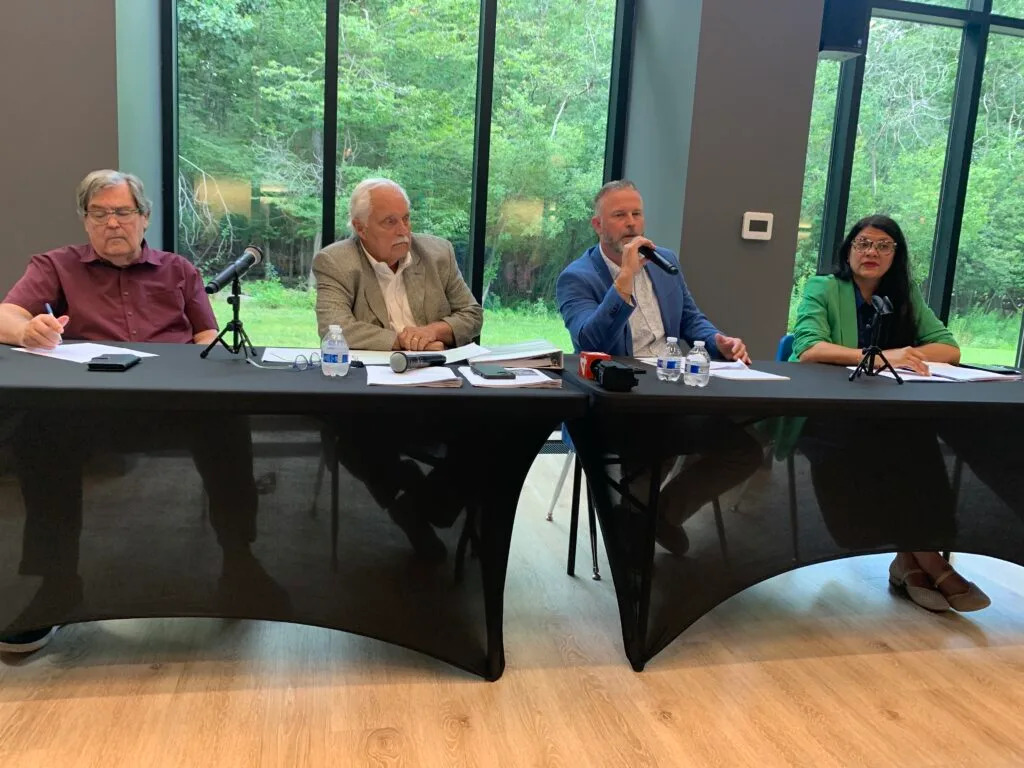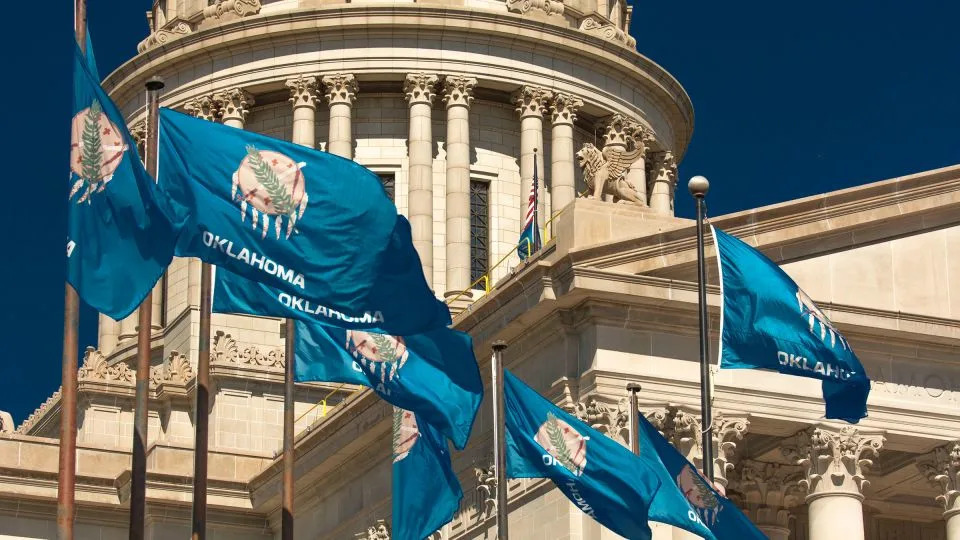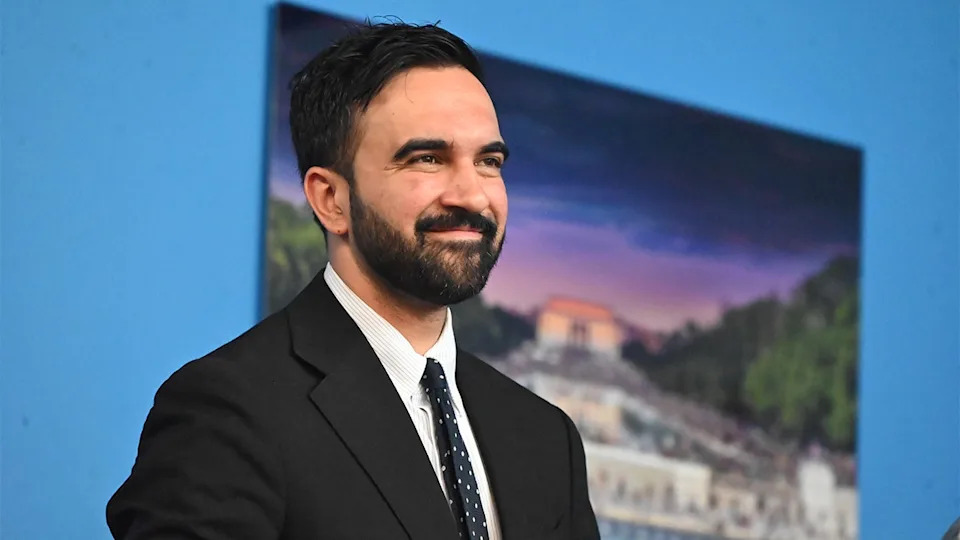
When the Trump administration gutted the U.S. Agency for International Development, Ethan Taylor knew the writing was on the wall for his USAID-funded job at the Department of the Interior. So he took the deferred resignation offered by the Department of Government Efficiency and ended his 24 years in the federal government rather than wait for a layoff to come.
Now Taylor is gearing up to teach two sections of Spanish I and three sections of Spanish IV starting later this month as a conditional teacher at Quince Orchard High School in Gaithersburg.
Taylor is one of 18 participants in an accelerated teacher training program in Montgomery County, which is attracting former federal workers in droves in the wake of government workforce reductions.
“I just feel like it’s a calling for me and I’m up for the challenge, but I don’t pretend for a minute that it’s going to be easy,” Taylor said. “My federal position was not a cakewalk either, but I had been in it for so long that I knew what I was doing… This, to me, is a whole new universe.”
Many states have teacher shortages. Some states have a pool of highly qualified and newly unemployed federal employees. Maryland has both and is now using one problem to solve the other by bringing laid-off government workers into education.
In May, Gov. Wes Moore announced $1 million in grants for 11 state schools to support new career paths for laid-off federal workers at a Montgomery College event. In addition to that school, Bowie State University, Morgan State University, Community College of Baltimore County, McDaniel College and Towson University are among the other recipients.
Maryland has the second-highest concentration of federal employees nationwide, behind only Washington, D.C., according to the Maryland Department of Labor. Since January, the state’s federal workforce shrank by 12,700 jobs as of Aug. 6, according to Dinah Winnick, spokesperson for the state labor department. That figure doesn’t include federal contractors.
Montgomery College’s Alternative Certification for Effective Teachers program began in 2005 to support military service members changing careers, according to its director, Glenda Hernández Tittle. Now it’s supporting federal workers to transition to teaching in critical shortage areas in the county’s middle and high schools, Hernández Tittle said.
Current teacher shortage areas include world languages, biology, chemistry, math and physics, according to the program’s website. Applicants must have a bachelor’s degree and a 3.0 GPA and pass a content knowledge exam in the area they want to teach, Hernández Tittle said.
“You have the knowledge, but we teach you how to teach your content,” she said.
After their teaching coursework, program participants have a six- to eight-week student teaching internship. The coursework and internship can be completed within six months. After that, students are qualified to begin a paid teaching position, known as their residency, Hernández Tittle said. The student-teachers will finally get their certification and state license at the end of a satisfactory resident year.
“That’s one of the reasons that our program, I think, is also so … attractive, particularly to degree-holders who don’t want another degree. Because after six months, you are eligible to go into this full-paid, full-benefits position.”
The infusion of $100,000 in state grant money allowed Montgomery College to have another cohort begin in June, hire additional instructors and coaches and provide participants with more support and training, Hernández Tittle said.
With priority given to former federal employee applicants, demand was huge to secure one of the 18 spots in the cohort, she said, leading to a waitlist that doubled in length. Twelve of the 18 who started in June had already been hired by Montgomery County Public Schools as of July 25, according to Hernández Tittle.
From feds to eds
The Baltimore Sun spoke with three members of the program’s June cohort who had received offers from the school district. Taylor and his colleague Sonia Arias acceptedoffers to teach high school Spanish, while Karen Armstrong will be teaching middle school math.
Arias and Taylor both came to the program after the dismantling of USAID earlier this year.
Arias was a federal contractor working as a senior program director for a $40 million USAID-funded education project in Nepal, while Taylor’s position as a supervisory program manager in the Department of the Interior’s Office of International Affairs was funded by the agency.
Armstrong was laid off in a reduction of force at the Department of Education in March. Despite her unique qualifications, she said the job market was suddenly flooded with highly qualified candidates in the wake of the federal force reductions.
“I have a doctorate in education research. I’m a data analyst. I’m a researcher. I worked hard to be where I am, but everyone like me … was fired too,” she said.
Pursuing education, despite the participants’ expertise in their fields, has not been the easy choice, they said. All of the former federal workers noted the significant pay cuts they were taking compared to their previous jobs, as well as the difficulty of changing careers. In Montgomery County, a first-year teacher in the 2025-2026 schoolyear could make between $64,591 and $73,524 depending on their qualifications.
Though she felt lucky to be able to pursue a career she’s passionate about, Arias found it galling to have to reinvent herself and start over at 61 while many of her peers are preparing to retire.
“To have to start from zero again is something … that I’m trying very, very hard just to put aside … because I’m a very positive person and I … have to move ahead.”
Pay cuts and starting over
Starting “at the bottom” as a first-year teacher is an uncomfortable adjustment for Taylor too.
“I was at a stage of my career where I felt like I was on my game, and now I’m feeling like I have to start from scratch,” Taylor said. “I was a supervisor. My team respected me, my colleagues respected me. I was good at what I did because I had been doing it for a long time.”
When asked if they would consider returning to their old jobs given the opportunity, Arias and Taylor both said they would pass.
“At this point, I feel like as tempting as it might be to go back into the federal government, I have put so much heart and soul into this ACET program and into my soon-to-be classroom, that I think it would be a hard sell,” Taylor said.
“I think if salaries were the same … I would love to stay in teaching. I think the … financial disparity is tricky for me,” Armstrong said, adding that she is hopeful that she will figure out the financials in a couple of years. “I would prefer just to stay with teaching.”
The annuity from Armstrong’s early retirement from the government doesn’t cover her monthly mortgage payment, she said, but teaching is more than a 50% reduction in pay from what she made before.
The ACET program itself was rigorous, too, participants said. The accelerated curriculum crams in 15 weeks’ worth of instruction in a five-week period, a workload Taylor said can sometimes be overwhelming.
“This is as hard as my doctorate was,” Armstrong said.
Despite the difficulties, all the teachers were excited to connect with their students and share their love of their subjects.
Teaching shortages
Maryland had more than 1,600 teaching vacancies in March, the latest data available, said Kelly Meadows, assistant state superintendent in the Maryland State Department of Education’s Division of Educator Effectiveness.
As of October 2024, 10% percent of Maryland’s teacher workforce is conditionally licensed, she said, accounting for 6,177 jobs.
The Blueprint for Maryland’s Future collaborative time provision would give teachers more time during the day to plan, grade, work one-on-one with students or engage in professional learning communities with their peers. The Maryland State Department of Education and Blueprint Accountability and Implementation Board said in January that the state would need 12,000 to 15,000 more teachers to implement the 60% teaching, 40% non-teaching time ratio in the Blueprint.
At the same time, 9.4% of public school teachers statewide did not return to the classroom in the last school year, according to February attrition numbers.
In Baltimore County, Superintendent Myriam Rogers said Tuesday there are about 56 vacancies in the school district two weeks before the start of school, with 74% of the district’s schools fully staffed. Last year, there were about 127 full-time teacher vacancies, she said.
Anne Arundel County Public Schools’ website said it had 50 teacher vacancies as of Aug. 11. Carroll County Public Schools has 10, a spokesperson for the district, Carey Gaddis, said via email Wednesday. The district is confident it will fill them by the first day of school, she said.
Initiatives bringing federal workers into education “represent just one part of a broader commitment to supporting recently separated federal workers. Governor Moore will continue to partner with federal, state, and local leaders to drive down teacher vacancies and uplift those who serve our communities,” Carter Elliott, press secretary for Gov. Wes Moore, said in a July statement.
Since Moore took office, Maryland’s teacher vacancies have dropped by a quarter, Elliott said.
The sudden influx of content-area experts onto the job market created an “opportunity to rethink where we tap into the pool of teachers for our future,” Hernández Tittle said.
“We really want dedicated individuals who really want to do this. Teaching is hard. It’s demanding … it takes a lot.”
Have a news tip? Contact Racquel Bazos at [email protected], 443-813-0770 or on X as @rzbworks.







Comments